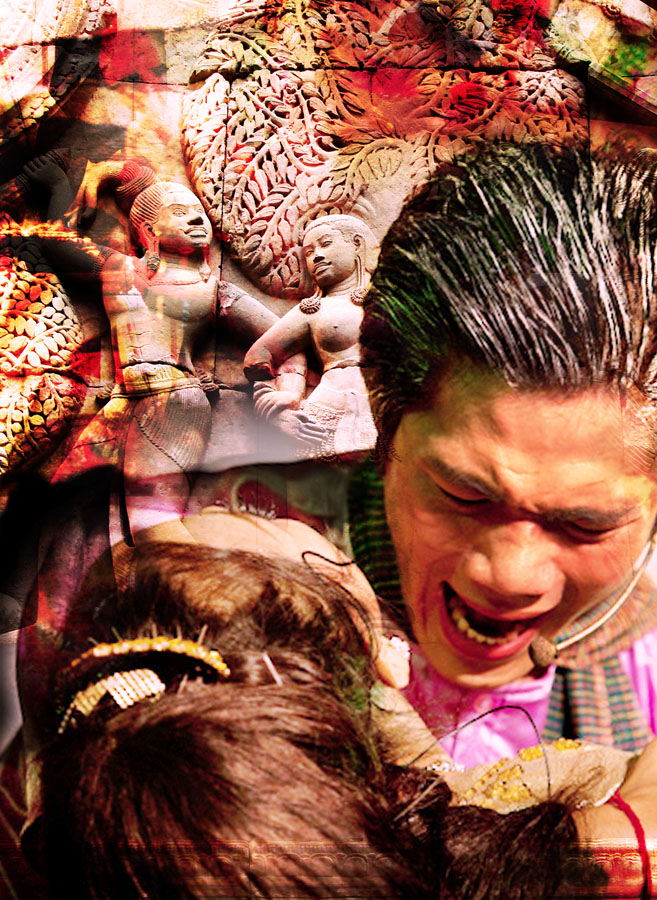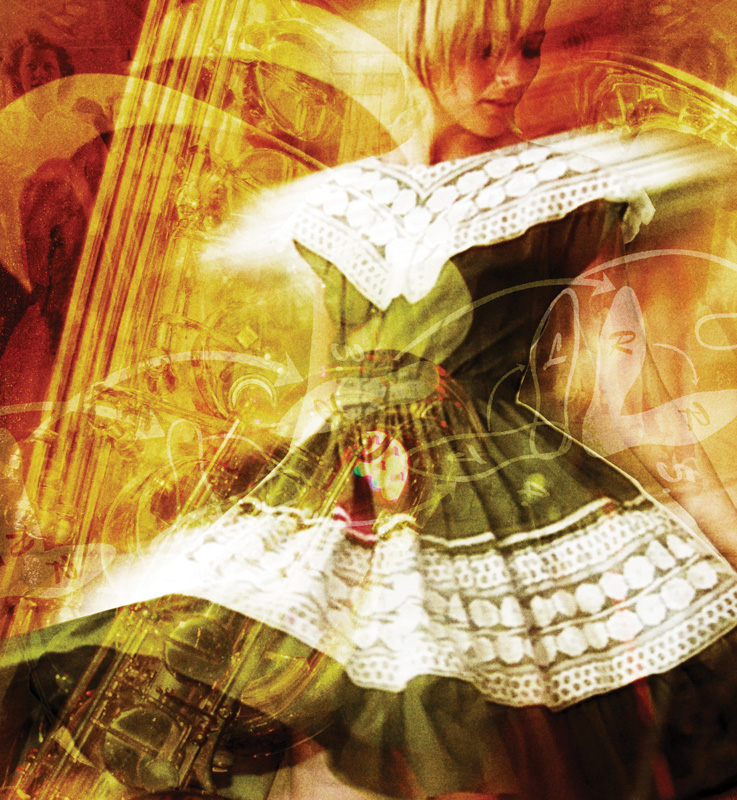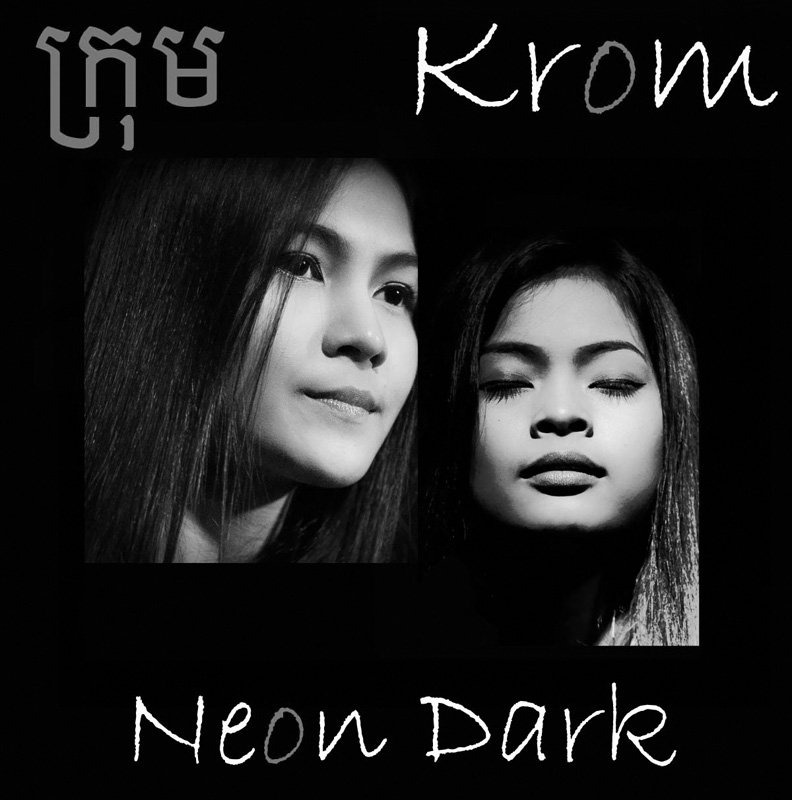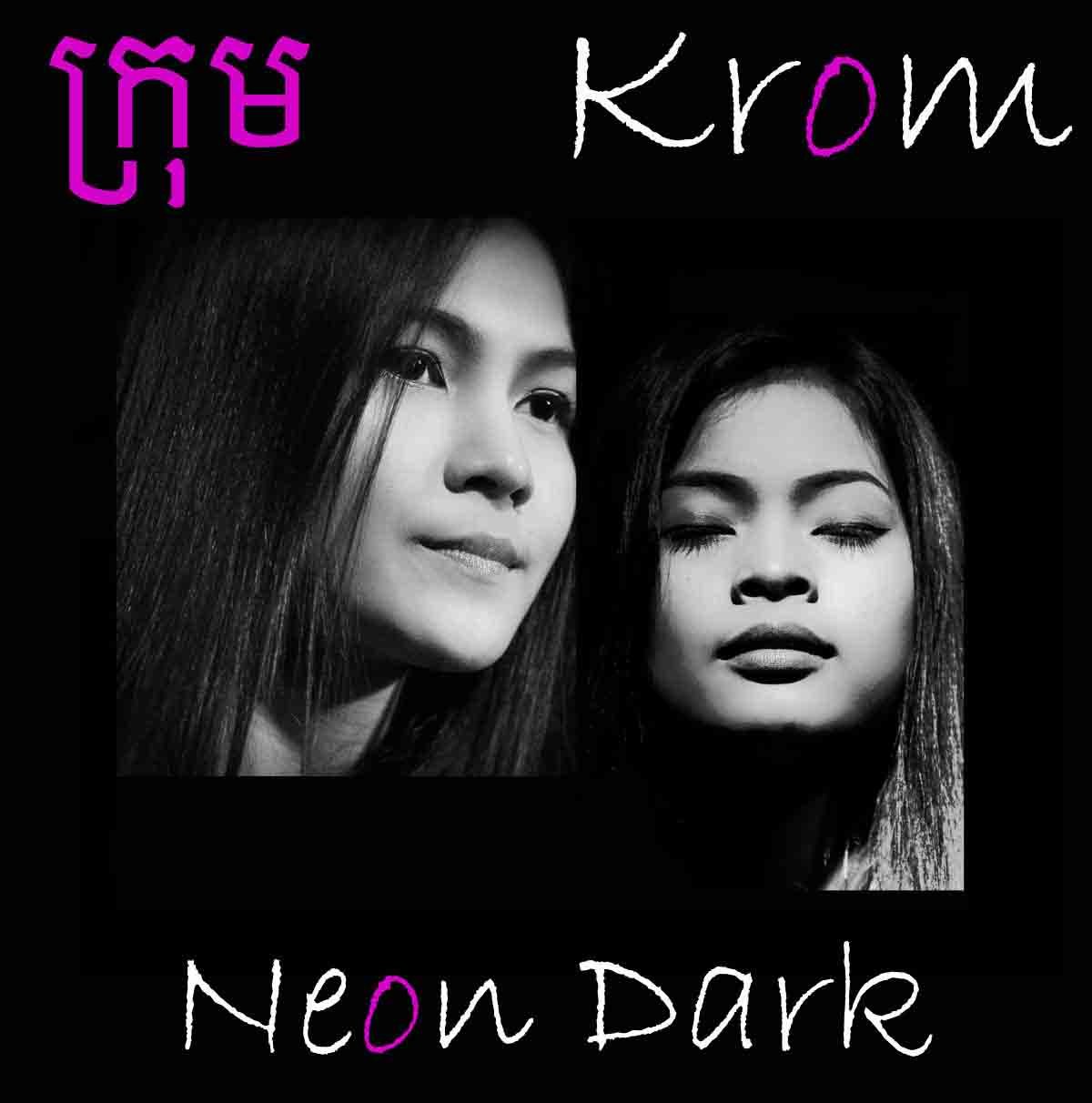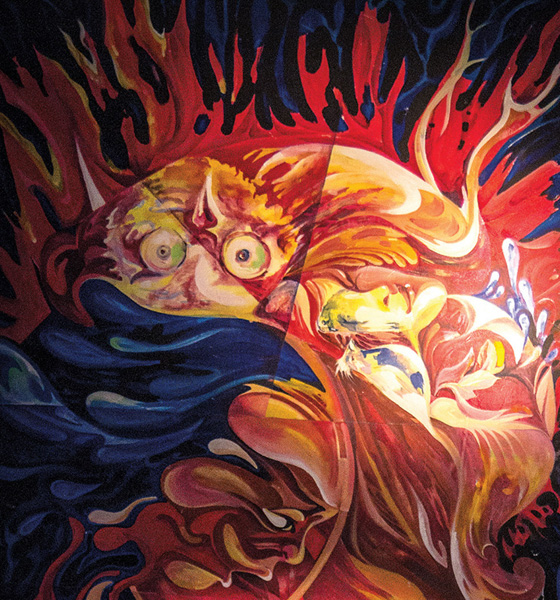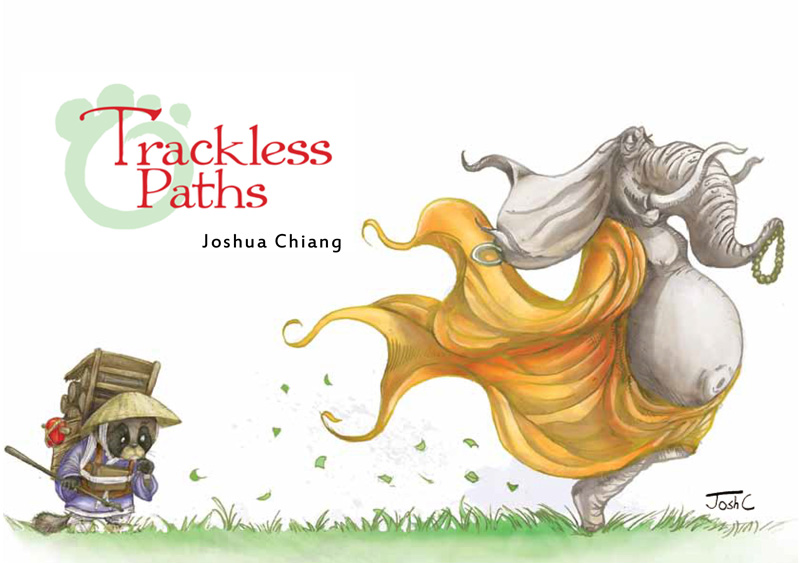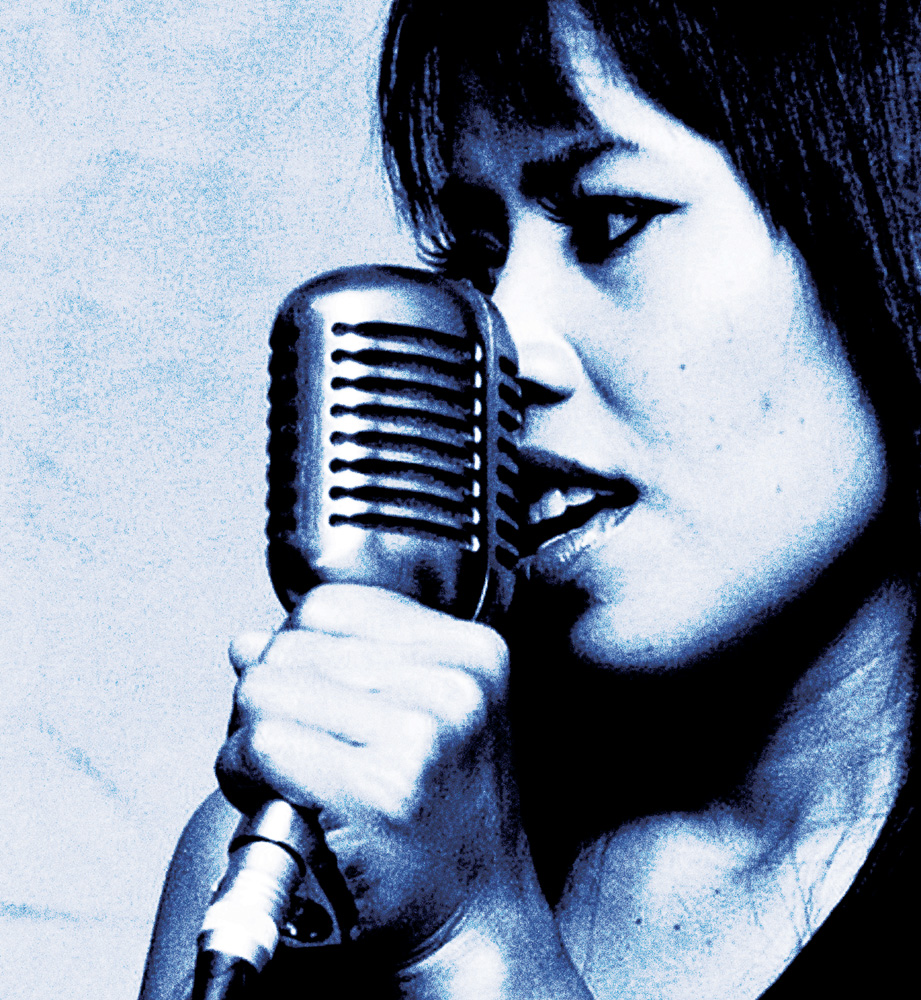Stolen wives, Machiavellian princes and a lesson in morals for the ruling elite
…..
From the skin of the giant skor drum comes a thunderous tribal beat. Palms slap rhythmically against synthetic hide; now fast, now slow, now staccato. This Morse code of sorts, emanating from the impenetrable darkness of the theatre’s right wing, coaxes into life the crouched figures occupying centre stage. Each has been teased, squeezed and ultimately stitched right into the most elaborate of costumes, their heads bowed before an expectant, near-silent audience.
Prostrate on a midnight-blue carpet, six heavily rouged young women with raven tresses tumbling almost to their waists begin to snake their wrists in time with the pounding of the drums. A chorus of Cambodian voices floats up, over rapt heads and out into the starry night air among the leafy grounds of the National Museum. Tailored swathes of coloured silk rise and fall like a fabric wave, the women’s bodies twisting and turning in front of a crimson backdrop.
Here, on the gold-trimmed all-weather stage built quite accidentally by Cambodian Living Arts to house its Plae Plakaa (‘Fruitful’) performances, ancient history is repeating itself – only this time, with one very notable difference. While the kohl-rimmed eyes peering out from beneath gilded headdresses may belong to characters from a time-honoured operatic form, the central message of this otherwise traditional show has the socially conscious modern viewer very much in its crosshairs.
Mak Therng, one of 20 traditional Khmer operas known collectively as yike (pronounced ‘yee-kay’), sounds at first not unlike the basic plot of many a Western soap opera/Shakespearean play: girl loves boy; girl gets stolen by another boy; original boy attempts to reclaim girl; something goes horribly, horribly wrong. In fact, and particularly in CLA’s interpretation, it’s a brilliant piece of social critique examining a) how power corrupts, and b) Everyman’s oft-tricky pursuit of justice.
The precise history of the yike genre depends entirely on who you ask. Some scholars say the opera, which involves singing, dancing, acting and drumming, originated in the eighth century. Others claim it dates back even further, to the fifth-century Cham Empire. The Cambridge Guide To Theatre, edited by Martin Banham, contains the following entry: ‘Yike developed in response to tours by Malay bangsawan troupes in the late 19th century. The art also parallels likay of Thailand in its mixture of classical and modern features. The introduction of wing-and-drop scenery, the rough approximation of classical dance used for entrances and exits, the humorous burlesques of classical legends and the introduction of new plots coupled with witty improvisation by performers helped yike gain wide popularity among the populace. Performances were even staged at court.’
Ask CLA’s Marion Gommard, perched on a stone bench 20 metres from the stage and struggling to make herself heard above the drums, and she answers thus: “We lost a lot of information about its creation; there are different stories about how yike was created. Some researchers believe it was created by the Cham during the Angkorian period and when they fought against the Khmer, the Khmer took that from them and made their own version. Another version of the story is that a Khmer king from that time made it and another says it comes from an Indonesian art form practiced by people on islands and in boats, speaking what is now a lost language.
“In every yike performance you have an introduction piece. In a lot of traditional Cambodian art forms you have to pay respect to the ancestors so that the spirits don’t cause any problems during the performance and everything goes smoothly. You have that in yike as well; it’s called [says something indecipherable] in that original language – they kept the word, but we’re not quite sure of the exact meaning! So we have these different theories that we can put together to find the history of yike, but it’s still quite unsure. It started in the 12th or 13th century and involves acting, theatre, singing, a lot of drumming. We could actually call it opera, a kind of musical theatre. It’s very traditional, very ancient.
“This one is called Mak Therng, which is the name of the hero. It’s an ancient folk tale. Originally it wasn’t part of the yike repertoire, but in the early 1970s it was adapted. In 2011 we had the idea to remake it again, so we invited American director Robert McQueen – a well known dramaturge – to work with our teacher, Uy Ladavan, and the troupe to make an improved theatre performance.
“It’s a social piece, really. Basically the story is that Mak Therng – the hero – is quite old, but has a younger wife. Very nice! [Laughs] They’re very much in love with each other, but then one day the prince comes in and he finds her very nice so he kidnaps her and brings her to the royal palace. The piece follows Mak Therng’s quest to take her back: it’s a social quest for justice. He goes in front of the king and asks for justice. It’s interesting because the original ending of the story is different than ours. The original end was the king saying ‘No’ and Mak Therng’s wife then kills herself because her reputation has been tarnished: the prince has already had his way with her.”
So why tamper with the end of such a time-honoured tale? At a workshop staged by CLA during the early stages of the artistic process, a conversation was had about what message the troupe – many of whom come from The White Building, the capital’s most famous artistic community – wanted to give people about women in society. Says Marion: “Uy Ladavan, the show’s director, told me she wanted to change the ending because she wanted to make people feel that justice is possible. The king can say ‘Yes.’”
The story as told by Ladavan, noted at the Anachak Dara awards (the Cambodian Oscars) for her script-writing and dramaturgy, is deliberately different than the version taught to her more than 40 years ago. In the original, the king takes no action against his wayward son, with tragic results. In Ladavan’s interpretation of Mak Therng, the ending has been changed: the king acknowledges his son’s crime and duly sentences him, a demonstration to modern audiences that fairness is not out of reach and justice can always be brought, whether in family, at work, or in civil society.
“When I was young, I saw yike performances directed by a very well known yike teacher, Grandfather Khy,” says Ladavan, who began studying the art form in 1972. “The first time I saw the performance, I fell in love! I registered to learn yike opera with the Royal University of Fine Arts under Grandfather Khy. I’m in love with yike because it’s one of the oldest among the 20 kinds of Cambodian opera. In yike, the music sounds very nice and also the way the actors dance is very soft and interesting. The music makes the characters seem not so cruel.”
Ladavan acknowledges theatrical traditions by keeping the set as simple as possible – a throwback to the past, when operas were performed on bare ground. In a video clip on CLA’s website, celebrated yike master Khy Mom, born of a famous pre-war opera family, describes a typical scenario: “My father and my grandfather were yike performers. In the past they performed on the ground. They just put mats down and there was no electricity so they burned wooden torches or lamps to play. I saw them and I loved it. My father was teaching them, so I asked him to teach me too. I love it because it is inherited from our ancestors and I am afraid of losing it. That’s why I am trying to persuade the young generation to try hard to keep it going so that it won’t be lost.”
And what of today’s young cast? “Some of our dancers come to us because their parents want them to and think it would be a good idea for them to be trained in a classical art form,” says Frances, also of CLA. “Some people come because they’ve seen it on TV or they know friends who are doing it and they’re keen to learn too. One of my favourite students grew up in the provinces and while he was tending his water buffalo he would hear people singing yike songs and he learned to love it. There are some terribly romantic stories like that.
“The subtext of this play is really, really accessible to audiences. The first time we went to watch the troupe practice at a school in front of regular classes, they were just blown away. At that point we didn’t have any subtitles and one of our questions had been would foreign audiences who didn’t speak Khmer actually get the performance? It’s so easy, even without subtitles, to follow the plot. A lot of Cambodians cry at it. We had one staff member who I caught running out and I thought what’s happened? She was in floods of tears and just couldn’t watch any more. It’s very powerful.”
Her words are echoed immediately by Ladavan, now occupying Marion’s space on the stone bench. “The story of Mak Therng plays a very important role in Cambodian society because the purpose is to educate people to love justice, to have high morals in society, to be good and to stand up for their rights. A lot of the artists in Cambodia have to be very careful about following political trends because of the pressure applied by high-ranking officials when actors represent the people in society. In traditional stories, the king is wrong, but he punishes innocent people. We changed the ending to show society that, in the story, the prince has to take responsibility for his actions. The king and the prince both represent people in power, the ruling elite. There are two main messages: one is that innocent people should stand strong and fight for justice. The other is that people in positions of power should take responsibility for their actions.”
CLA’s new season, which marks the organisation’s 15th year, is now open 7pm Monday to Saturday at The National Museum. Mak Therng is staged on Tuesdays and Fridays; Children of Bassac dance shows are held on Mondays and Thursdays; Passage Of Life, a journey from birth to death, is staged on Wednesdays and Saturdays (details at cambodianlivingarts.com).
WHO: Cambodian Living Arts
WHAT: Plae Plakaa performances
WHERE: The National Museum, Street 178
WHEN: 7pm Monday to Saturday
WHY: Ancient wisdom for a modern world
